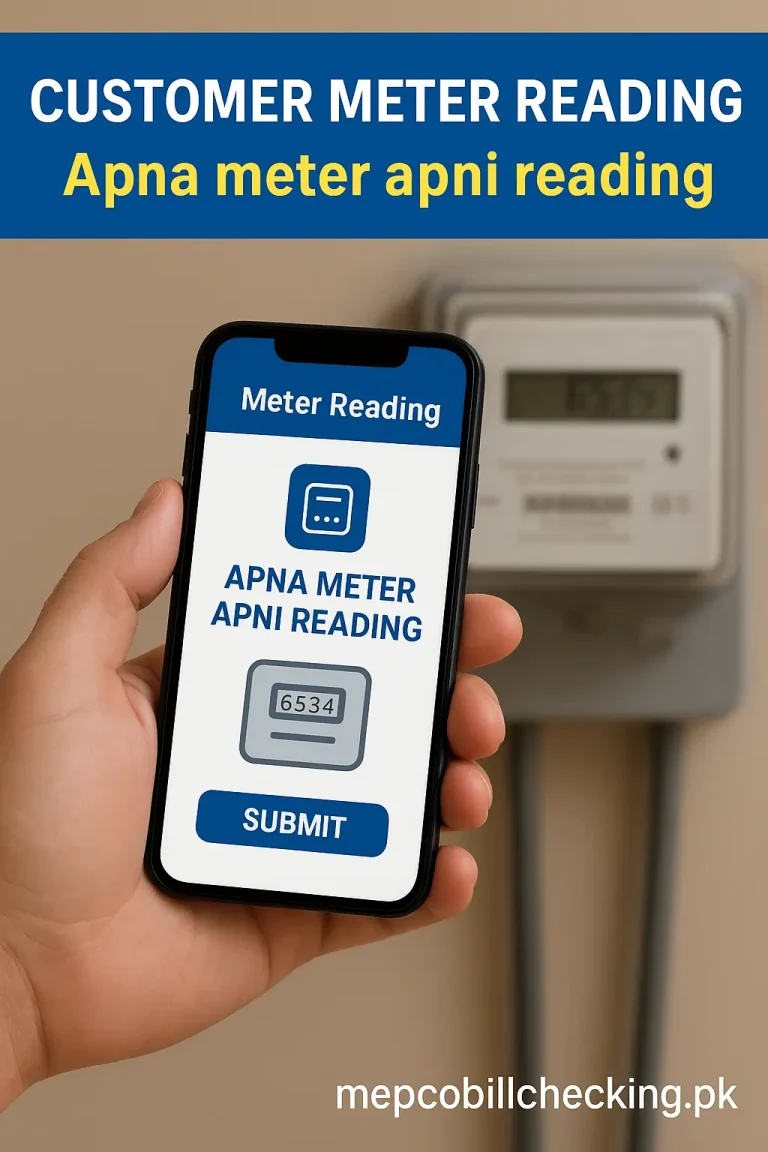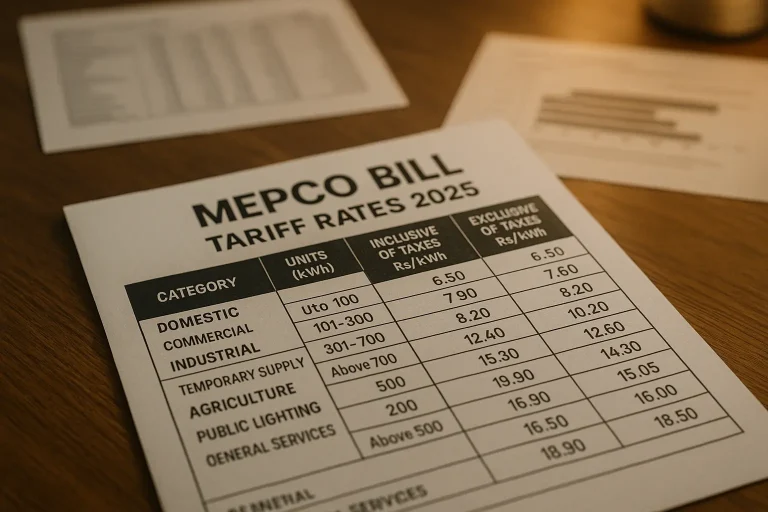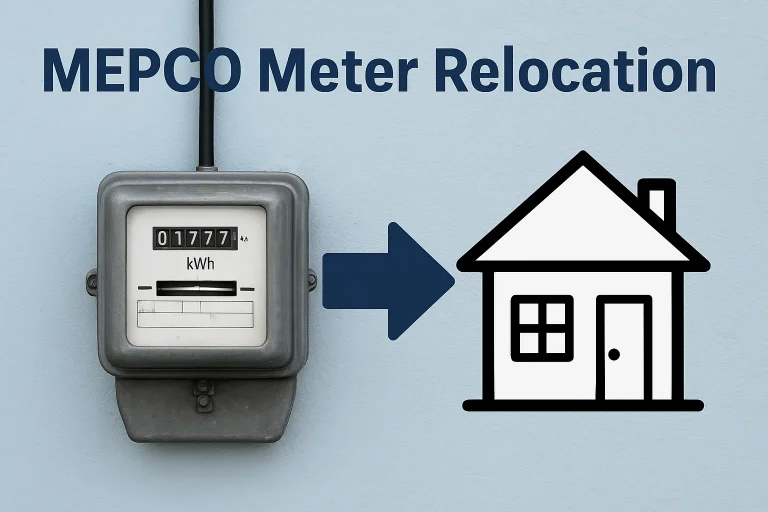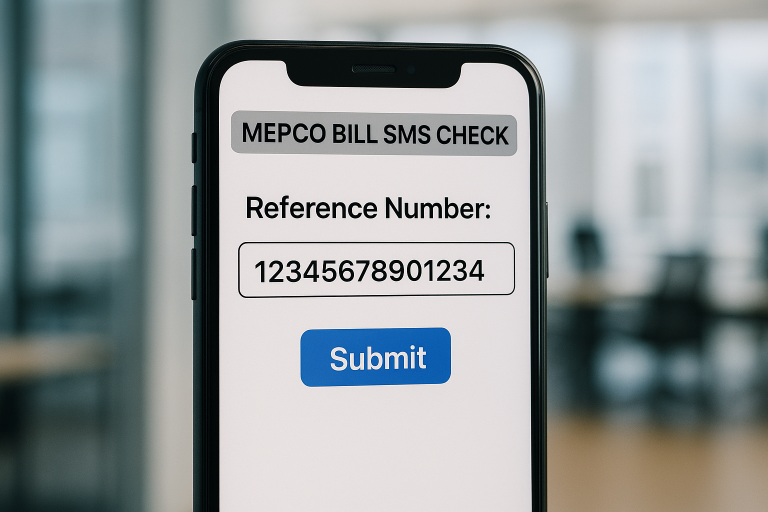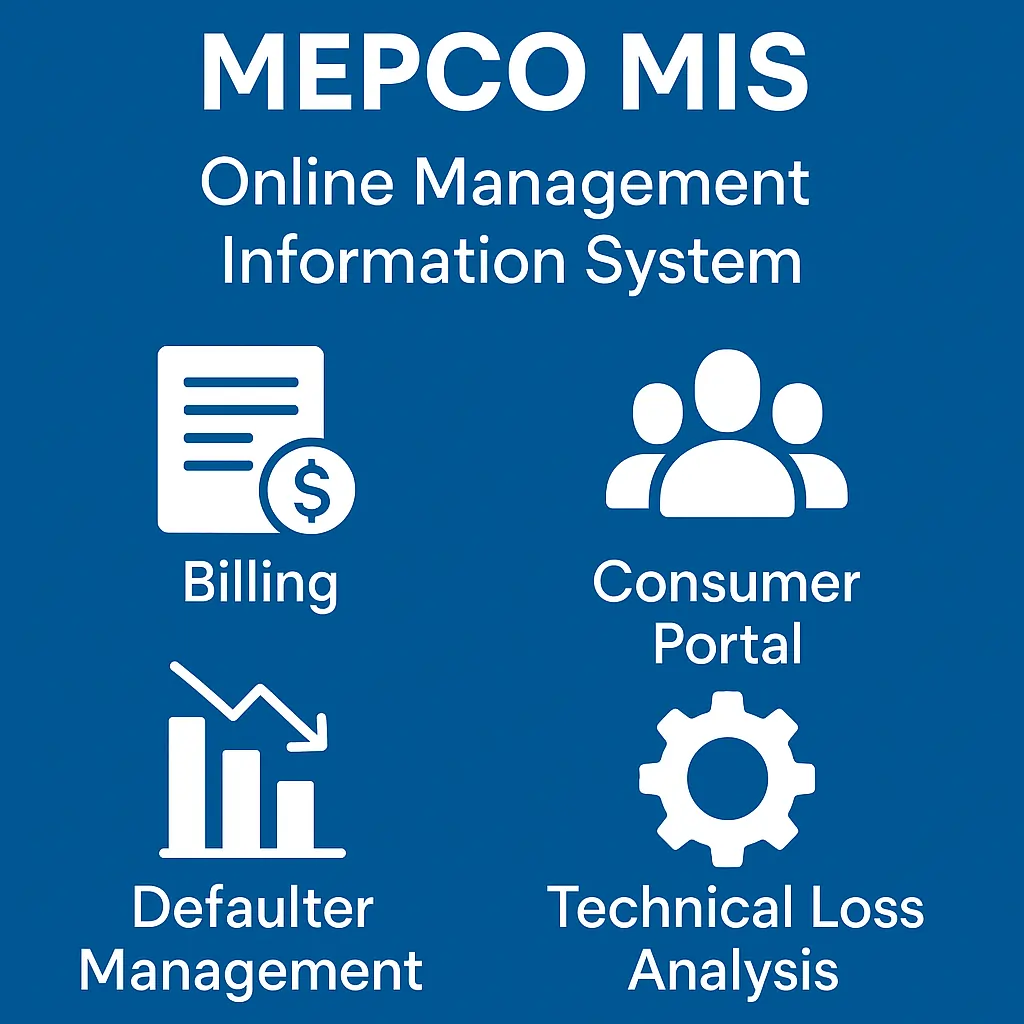
⚡ What Is MEPCO MIS?
The Multan Electric Power Company (MEPCO) serves over 34 million people across thirteen districts of South Punjab with a vast electricity network. To manage this large-scale operation efficiently, MEPCO utilizes its proprietary Management Information System (MIS)—a secure internal platform designed exclusively for MEPCO staff and management. This article presents a factual, in-depth overview of the MIS—its purpose, capabilities, structure, and internal impact.
🏛️ Background: MEPCO & Its Operational Scope
- MEPCO was established on 14 May 1998, when WAPDA’s Multan Area Electricity Board was corporatized.
- Its jurisdiction covers Multan, D.G. Khan, Bahawalpur, Rahim Yar Khan, and nearby districts—managing over 82,000 km of lines, 786 grid stations, 672 feeders, and approximately 109,000 distribution transformers.
Beyond infrastructure, MIS plays a central role in streamlining internal data flows, operational processes, and decision-making.
🧰 Core Modules & Functionalities
MEPCO MIS integrates several critical modules for internal governance and workflow management:
📋 1. Daily & Monthly Financial Reporting
- Cash collection, batch-wise billing statistics, billing vs. actual collections, and cash-posting status from division to headquarter levels.
📊 2. Defaulter Management
- Detailed defaulter lists categorized by aging and monetary slabs, as well as CP‑114 compliance and TDO/ERO reports.
📉 3. Loss Analytics & Technical Monitoring
- Tools to analyze line losses, feeder-level performance, and progressive loss trends—vital for improving distribution efficiency.
⚙️ 4. Asset & Theft Monitoring
- Records of defective meters (CP‑90), tagging validation, and grid-level anti‑theft investigations; supports sub‑division breakdowns for targeted action.
🔄 5. Snap-tracking & Quality Control
- Batch-based validation ensures accurate meter reading and mepco billing data consistency across divisions.
🧾 6. Operational & Strategic Support
- Strategic reporting tailored for upper management, operational dashboards for divisional control, and detailed data for field staff use.
🛡️ Access Control & Security
- Strict authentication: Every login requires a unique user ID and password, coupled with network control measures like VPN access.
- Audit trails: MIS logs all user activities for compliance, accountability, and transparency.
🗂 Structure & Departments
Within MEPCO, the MIS department is structured to support efficient data flow and reporting:
- Organogram includes Revenue Office, Liaison Section, Control Section, Punch/Entry Section, and Data Center (Machine Room).
- MIS aggregates data from multiple internal sources, processes it, and visualizes results for decision-making across management tiers—strategic, managerial, and operational.
✅ Benefits of MEPCO MIS
Enhanced Operational Efficiency
Automated processes eliminate manual inefficiencies, generating consistent reports and enabling faster data-driven decision-making.
Improved Billing & Revenue Recovery
Billing vs. cash reports, receivables tracking, and categorized defaulter analysis improve revenue collection.
Loss Mitigation & Theft Detection
Feeder‑level analytics and tagging tools identify high‑loss zones and suspicious activity, leading to corrective measures.
Data-Based Strategy
MIS provides leadership with high‑resolution dashboards to manage capacity planning, infrastructure upgrades, and resource allocation.
Centralized Oversight
From grid stations to sub‑divisions, MIS delivers structured visibility, enabling rapid response and operational coherence.
📚 How MIS Operates — A Look Behind the Scenes
Data Input & Processing
MIS pulls raw inputs from SCADA systems, billing centers, field offices, revenue branches, and maintenance records. It consolidates these into structured databases for further analysis.
Reporting & Outputs
Users run report queries via web menus—for instance, daily cash collection by sub-division or feeder-wise progressive line-loss charts. Reports are printable and accessible via hierarchical access levels.
Access Flow
- User logs into the MIS portal.
- Dashboard displays relevant reports per role (e.g. Defaulter summary, cash collection stats, etc.).
- Reports can be filtered by division, tariff slab, department type (government vs. private), and date range.
- Data can be exported or printed for field interventions or board meetings.
🌱 Challenges & Evolution
Older system limitations included manual scan sheets, slower reporting cycles, and limited automation. Earlier studies recommended improvements like automated scheduling, online new-connection processing, and enhanced database scalability.
Over time MIS has evolved significantly—reducing report latency, improving real-time visibility, and optimizing billing operations across MEPCO’s service territory.
📌 Summary Table
| Domain | MIS Functionality |
|---|---|
| Billing & Revenue | Daily/Monthly billing stats, collection tracking, receivables by slab/division |
| Defaulters & CP‑114 | Running defaulter and CP‑114 TDO/ERO reports |
| Line Loss Monitoring | Feeder-wise monthly/progressive loss analysis |
| Asset Management | CP‑90 tagged defective meters, transformer inspection logs, anti‑theft tracking |
| Snap‑tracking Quality | Batch-wise meter reading validation and discrepancy reports |
| Reporting & Dashboards | Role-based dashboards for management, operations, and field staff |
🔒 Key Clarifications
- MEPCO MIS is not publicly accessible: It requires secure credentials and is exclusively available to MEPCO employees.
- Consumers do not use MIS: All services like bill downloads, complaint submission, or meter reading uploads are handled through separate consumer-facing platforms—not MEPCO MIS.
- All above descriptions refer only to internal, official functionality of MEPCO MIS, based on MEPCO documentation and internal system outlines.
🧭 Frequently Asked Questions
🏁 Conclusion
MEPCO MIS is a sophisticated and secure system that empowers both MEPCO staff and consumers. It enhances transparency, operational efficiency, and decision-making. For anyone seeking to manage electricity billing or understand internal power distribution workflows, MEPCO MIS is the critical hub that powers it all.

